Email marketing has emerged as a powerful tool for insurance agencies to build relationships with customers, generate leads, and drive conversions. With a well-crafted email marketing strategy, insurance companies can effectively engage with prospects and policyholders, ensuring long-term customer retention.
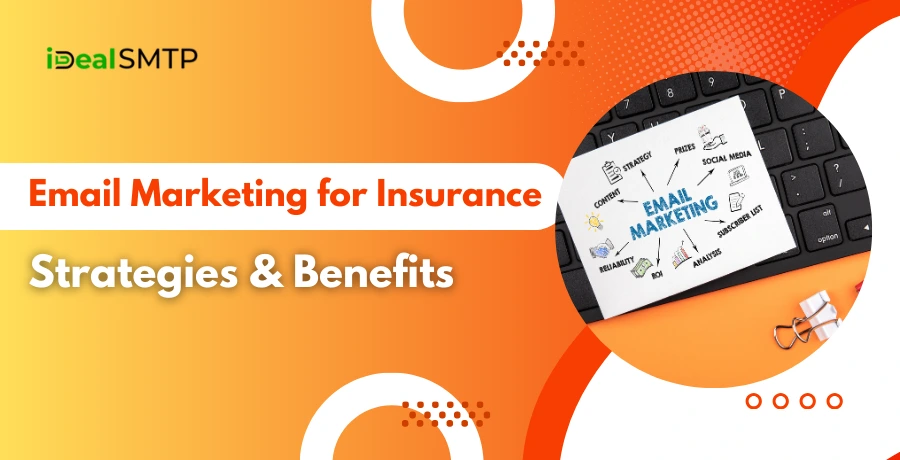
In this guide, we will explore the best practices, strategies, and benefits of email marketing for insurance agencies in detail.
Table of Contents
Pricing
| Trail Plan | Standard Plan | Premium Plan | Professional Plan |
| $50 | $145 | $185 | $225 |
| Sending Limit | Sending Limit | Sending Limit | Sending Limit |
| 1000 Emails/Hour | 1500 Emails/Hour | 3000 Emails/Hour | 5000 Emails/Hour |
Why Email Marketing for Insurance Agencies?
Email marketing is one of the most effective digital marketing strategies for insurance agencies. It helps build relationships, nurture leads, and drive conversions at a low cost. Here’s why insurance agencies should leverage email marketing:
1. Cost-Effectiveness
Compared to traditional marketing methods such as direct mail or television advertisements, email marketing is significantly more cost-efficient. Insurance agencies can reach thousands of potential clients at a fraction of the cost without investing heavily in printing or advertising expenses. Additionally, email marketing allows agencies to track performance without additional expenditures.
2. Direct Communication
Email Marketing for Insurance allows insurance agencies to communicate directly with their audience. Unlike social media or paid ads that rely on algorithms, emails go straight to the inbox of potential clients, ensuring direct visibility. This helps in building a personalized connection and keeping potential customers informed about offers and updates.
3. Lead Nurturing
Insurance leads often take time to convert due to the complexity of decision-making. Email campaigns help nurture leads by sending valuable content that educates potential clients about different insurance policies, benefits, and personalized offers. Regular communication keeps them engaged and increases the chances of conversion.
4. Automation & Scalability
With automation tools, insurance agencies can schedule emails in advance, send reminders for policy renewals, and automate follow-ups without manual intervention. This not only saves time and resources but also ensures that no customer is left unattended.
5. Data-Driven Insights
Most email marketing platforms provide detailed analytics, allowing insurance agencies to track open rates, click-through rates, and conversions. These insights help refine future strategies and improve overall performance, making email marketing a data-driven approach for better decision-making.
Setting Up an Email Marketing Campaign for Insurance Agencies
Setting up an email marketing campaign for insurance agencies requires a strategic approach to ensure compliance, engagement, and conversions. Here’s a step-by-step guide to help you create an effective campaign:
1. Choosing the Right Email Marketing Service
Selecting the right email marketing service is crucial for managing campaigns effectively. Some popular platforms include:
1. iDealSMTP
An SMTP service provider that offers email delivery solutions, primarily for transactional and bulk email sending.
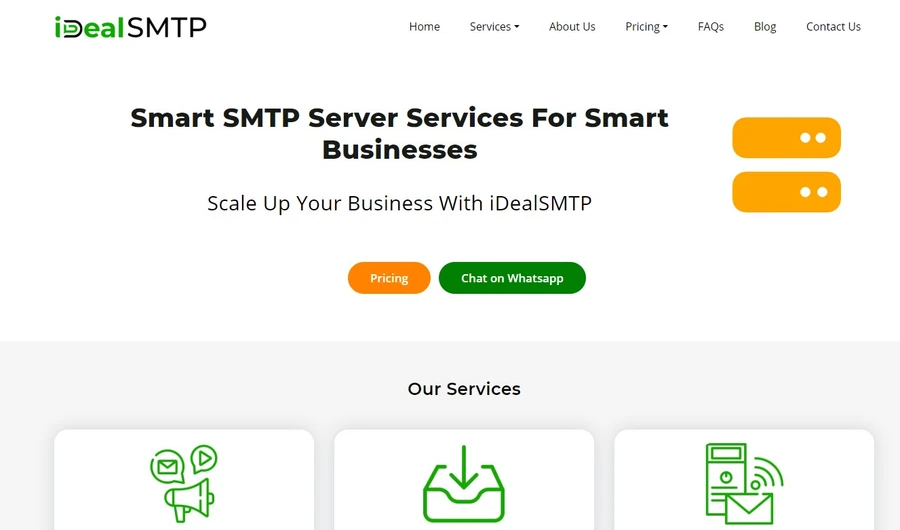
Best for: Businesses needing a strong SMTP service for bulk emailing.
Features: High deliverability, dedicated IP, and authentication security.
Pricing: Tier-based pricing.
Why Choose? Ensures inbox placement with advanced email routing.
2. SMTPget
SMTPget is a dedicated SMTP relay service provider specializing in high-volume email delivery, often used for cold email outreach and marketing campaigns.
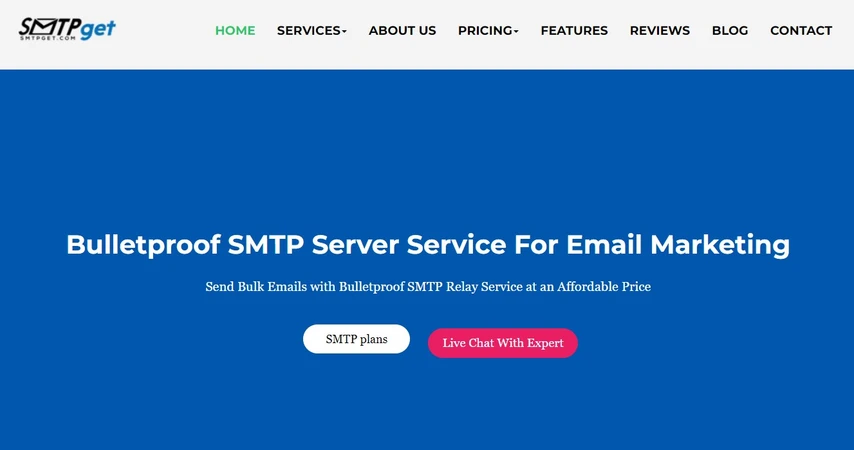
Best for: High-volume email sending and SMTP-based campaigns.
Features: SMTP relay, dedicated IPs, email tracking, and high deliverability.
Pricing: Custom pricing based on volume.
Why Choose? Reliable SMTP-based sending for transactional and marketing emails.
3. Mailchimp
A popular email marketing platform that offers email automation, campaign management, and CRM features, ideal for businesses of all sizes.
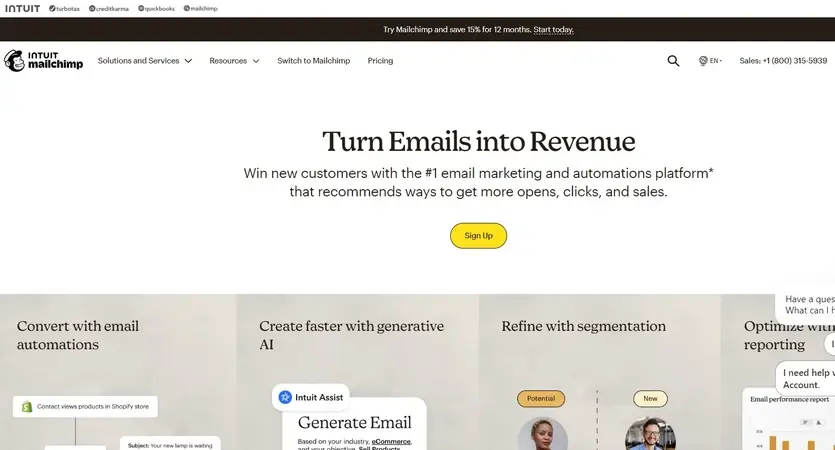
Best for: Small businesses and startups.
Features: Drag-and-drop editor, automation, A/B testing, analytics.
Pricing: Free for up to 500 subscribers; paid plans start at $13/month.
Why Choose? User-friendly and feature-rich with AI-assisted tools.
4. Brevo (formerly Sendinblue)
A multi-channel marketing platform providing email marketing, SMS campaigns, and CRM tools, known for its transactional email capabilities.

Best for: Growing businesses needing email & SMS marketing.
Features: Automation, CRM integration, SMS marketing, A/B testing.
Pricing: Free plan available; paid plans start at $25/month.
Why Choose? Offers SMS and email marketing in one platform.
5. ActiveCampaign
A marketing automation platform that combines email marketing, sales automation, and CRM features to help businesses engage with their audience.
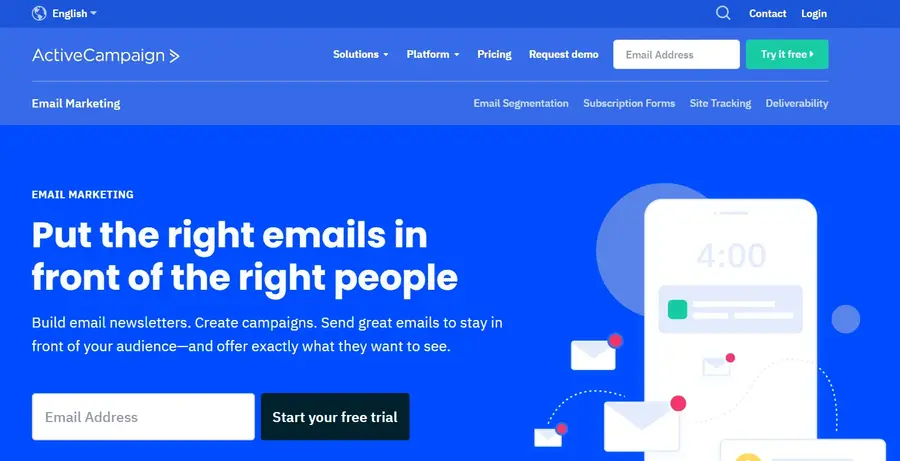
Best for: Advanced automation and CRM integration.
Features: Email segmentation, predictive analytics, split automation.
Pricing: Starts at $29/month.
Why Choose? Excellent for businesses wanting AI-driven automation.
6. ConvertKit
An email marketing tool designed for content creators, bloggers, and small businesses, featuring automation and segmentation tools.
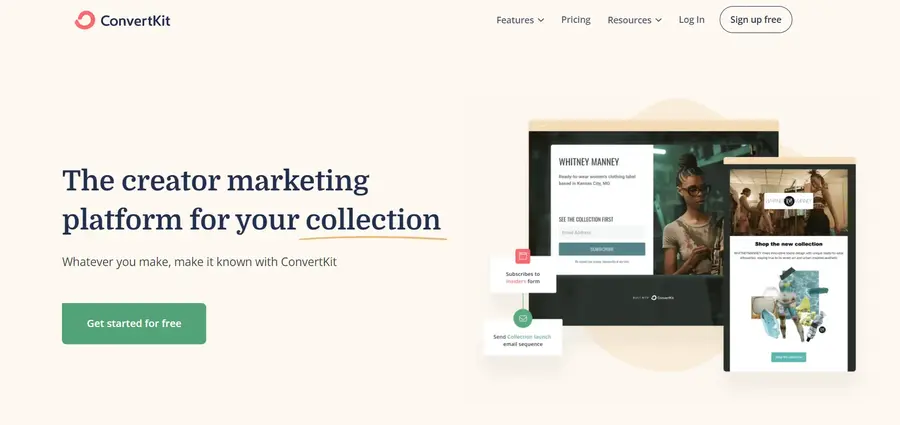
Best for: Bloggers, creators, and content marketers.
Features: Email automation, tagging, landing pages, and integrations.
Pricing: Free up to 1,000 subscribers; paid starts at $9/month.
Why Choose? Ideal for content-focused campaigns.
7. Constant Contact
An email marketing service that provides tools for creating email campaigns, social media marketing, and event management.
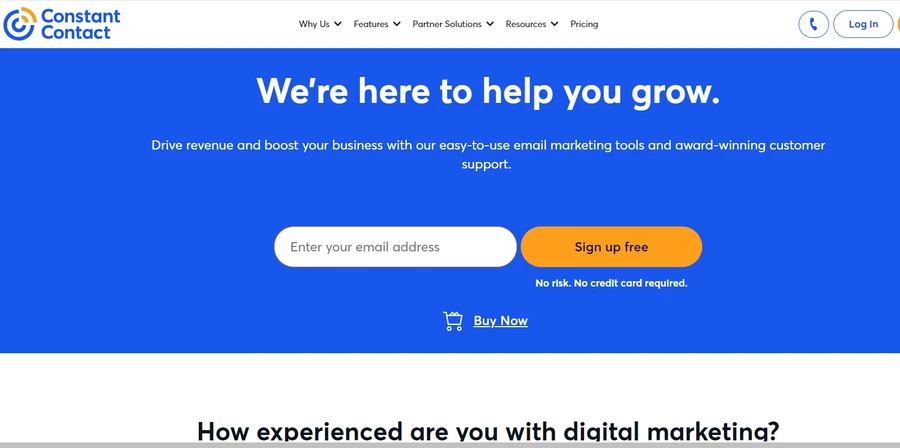
Best for: Small businesses & nonprofits.
Features: Email templates, social media ads, surveys, and event management.
Pricing: Starts at $12/month.
Why Choose? Simple setup with strong customer support.
8. AWeber
An email marketing platform with automation, segmentation, and landing page tools, catering to small businesses and entrepreneurs.
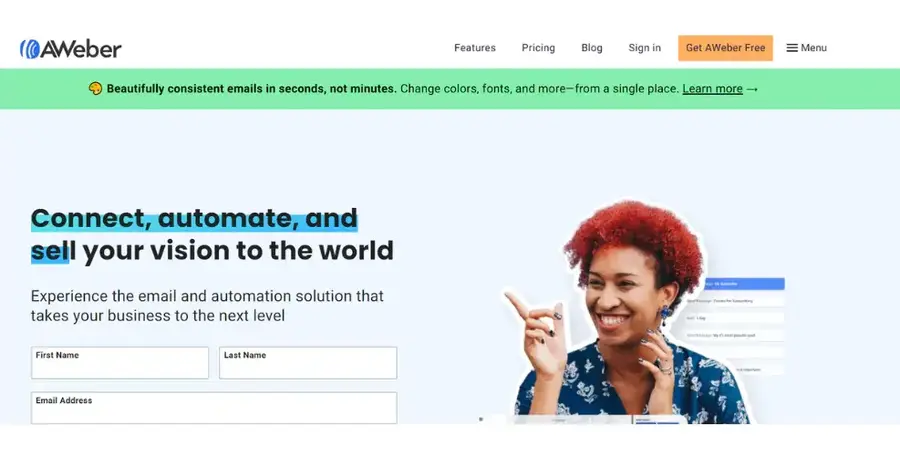
Best for: Entrepreneurs and small business owners.
Features: List management, autoresponders, landing pages, analytics.
Pricing: Free for up to 500 subscribers; paid starts at $14.99/month.
Why Choose? Easy-to-use interface with great customer support.
9. GetResponse
A comprehensive marketing platform offering email marketing, automation, landing pages, and webinars for lead generation.
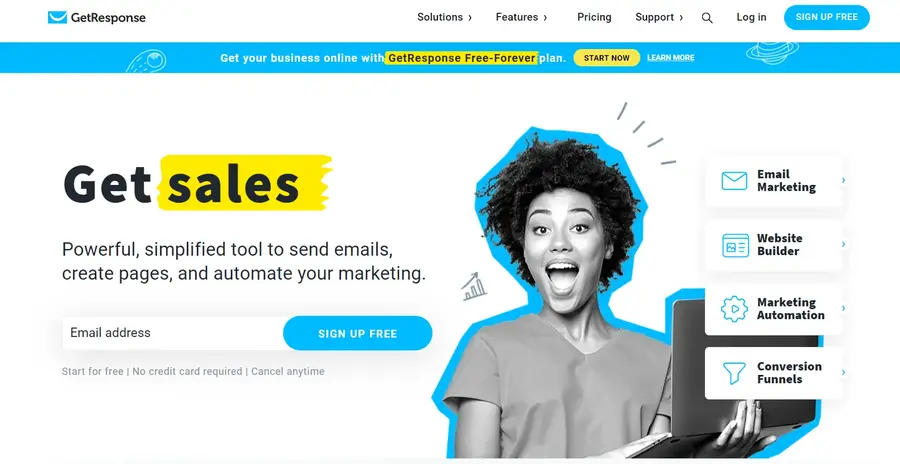
Best for: Automated workflows and lead generation.
Features: Marketing automation, webinars, landing pages, CRM tools.
Pricing: Starts at $19/month.
Why Choose? Comprehensive marketing suite beyond just emails.
10. MailerLite
A lightweight, user-friendly email marketing platform that focuses on simplicity and affordability, offering automation and drag-and-drop email builders.

Best for: Budget-conscious marketers looking for simple tools.
Features: Drag-and-drop editor, automation, A/B testing, surveys.
Pricing: Free up to 1,000 subscribers; paid starts at $9/month.
Why Choose? Affordable and beginner-friendly platform.
These platforms help in designing, automating, and tracking email marketing efforts efficiently.
2. Building and Segmenting Your Email List
To maximize the impact of your email marketing campaigns, it is essential to segment your email list based on specific criteria:
- Demographics– Group subscribers based on age, location, and income level to send relevant insurance offers.
- Insurance Type– Categorize users based on interest in life, health, auto, or home insurance.
- Customer Journey Stage– Send different emails to prospects, new customers, and long-term policyholders.
- Engagement Level– Target active subscribers differently from inactive users by offering incentives or reminders.
A well-segmented list ensures higher engagement and a better response rate.
3. Crafting Effective Email Content
The success of an email campaign depends on its content. Here are the different types of emails that work best for insurance agencies:
- Welcome Emails– The first impression matters. A welcome email should introduce new subscribers to your agency, services, and special offers.
- Educational Emails– Provide useful insights on different insurance plans, coverage options, and benefits.
- Promotional Emails– Highlight discounts, new policy launches, and limited-time offers.
- Policy Renewal Reminders– Notify existing customers about upcoming policy renewals to avoid lapses in coverage.
- Testimonials & Case Studies– Share real-life stories and customer success experiences to build trust and credibility.
4. Personalization and Automation
- Personalized Emails– Using dynamic fields, emails can address recipients by name and provide policy recommendations based on their preferences.
- Automated Workflows– Set up automated sequences to send onboarding emails, follow-ups, and renewal reminders, ensuring continuous engagement.
5. Designing Mobile-Friendly Emails
Since a significant portion of users check emails on mobile devices, it is essential to ensure:
- Responsive Templates– Use mobile-friendly email designs that adjust seamlessly on different devices.
- Concise Subject Lines– Keep subject lines short and engaging to capture attention quickly.
- Clear Call-to-Action (CTA) Buttons– Make it easy for readers to take action, whether it’s getting a quote, scheduling a call, or learning more about a policy.
Compliance and Best Practices
Below are key compliance requirements and best practices to ensure your email campaigns are effective and lawful.
1. GDPR & CAN-SPAM Compliance
Ensure that all email campaigns adhere to legal regulations such as the General Data Protection Regulation (GDPR) and CAN-SPAM Act to protect user privacy and avoid penalties.
2. Opt-In & Opt-Out Mechanisms
- Always obtain explicit consent from recipients before sending marketing emails.
- Provide a simple and clear option to unsubscribe to build trust and maintain a healthy email list.
3. Avoid Spam Triggers
To ensure your emails reach the inbox instead of spam folders:
- Avoid excessive capitalization and misleading subject lines.
- Refrain from using spammy words like “free,” “guaranteed,” or “urgent.”
- Use verified domains and maintain a good sender reputation.
Measuring and Optimizing Your Email Campaigns
Tracking key performance indicators (KPIs) helps in refining your strategy for better results. Important KPIs include:
- Open Rate– Measures how many recipients open your email. A low open rate may indicate weak subject lines or poor email deliverability.
- Click-Through Rate (CTR)– Indicates how many users clicked on a link inside your email, reflecting content effectiveness.
- Conversion Rate– Tracks how many recipients took the desired action, such as requesting an insurance quote.
- Bounce Rate– Shows how many emails were not delivered due to invalid addresses or spam filters.
A/B Testing
A/B testing involves sending two versions of an email with slight variations to determine which performs better. Test elements like:
- Subject lines
- Email design and layout
- CTA placement and wording
- Sending time and frequency
Conclusion
Email marketing for insurance agencies is a powerful strategy to enhance customer engagement, generate leads, and improve retention. By leveraging the right email marketing service, creating compelling content, and adhering to best practices, insurance businesses can achieve significant growth and customer satisfaction.
By implementing these detailed strategies, your insurance agency can maximize the impact of email marketing and stay ahead in a competitive industry.







